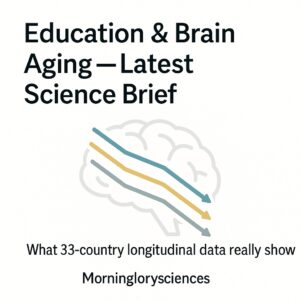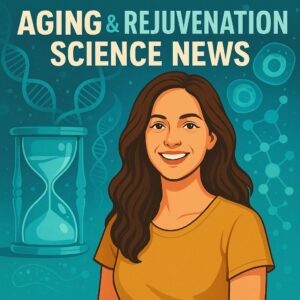Can human cells divide forever? In 1961, Leonard Hayflick and Paul Moorhead provided a clear answer to this question. Their seminal paper demonstrated that normal human diploid cells have a limited number of divisions, introducing the concept now known as the Hayflick Limit.
Summary and Experimental Design
Using fetal lung-derived diploid fibroblasts, they tracked proliferation through serial passages. They found that cells stop dividing after approximately 40 to 60 doublings. This was the first scientific demonstration that normal cells have a finite lifespan in culture.
Scientific Impact at the Time
In an era when immortal cancer cell lines like HeLa were widely used, this discovery caused a stir. The Hayflick Limit shifted perspectives on aging, cancer biology, and cellular senescence.
Modern Understanding and Significance
We now know that the Hayflick Limit is closely related to the progressive shortening of telomeres—protective caps at the ends of chromosomes. Once telomeres reach a critical length, cells enter senescence and stop dividing.
This finding laid the foundation for today’s regenerative biology, including telomerase research, iPS cell technology, and partial cellular reprogramming using Yamanaka factors—all of which aim to “reset” or bypass the Hayflick Limit.
Relevance to Modern Aging & Rejuvenation Research
Sixty years on, the Hayflick Limit remains central to our understanding of aging. While aging is now known to involve inflammation, DNA damage response, and epigenetic drift, the concept of replicative senescence still underpins many anti-aging strategies.
In many ways, this paper marks the true beginning of cellular aging research, and its relevance continues to grow with the field.
Source: Hayflick L, Moorhead PS. The serial cultivation of human diploid cell strains. Exp Cell Res. 1961 Dec;25:585–621. DOI: 10.1016/0014-4827(61)90192-6
【My Thoughts】
Sometimes, the most powerful scientific insights arise from simple observations. “Why do these cells stop dividing?” This question led to a discovery that fundamentally reshaped our understanding of human aging. No matter how advanced rejuvenation technologies become, their foundation will always trace back to this landmark study.





Comments
List of comments (1)
This is a paper that I read during my graduate school days in a validation experiment using normal human cultured cells, which was basic research but could be approached experimentally at the time, and it remains vivid in my memory. Knowing this basic information, I can understand and interpret diseases such as the latest telomere length and infinite growth of cancer cells from the cellular and molecular level, so I can better understand new treatment methods and medical and healthcare concepts.
Translated with DeepL.com (free version)